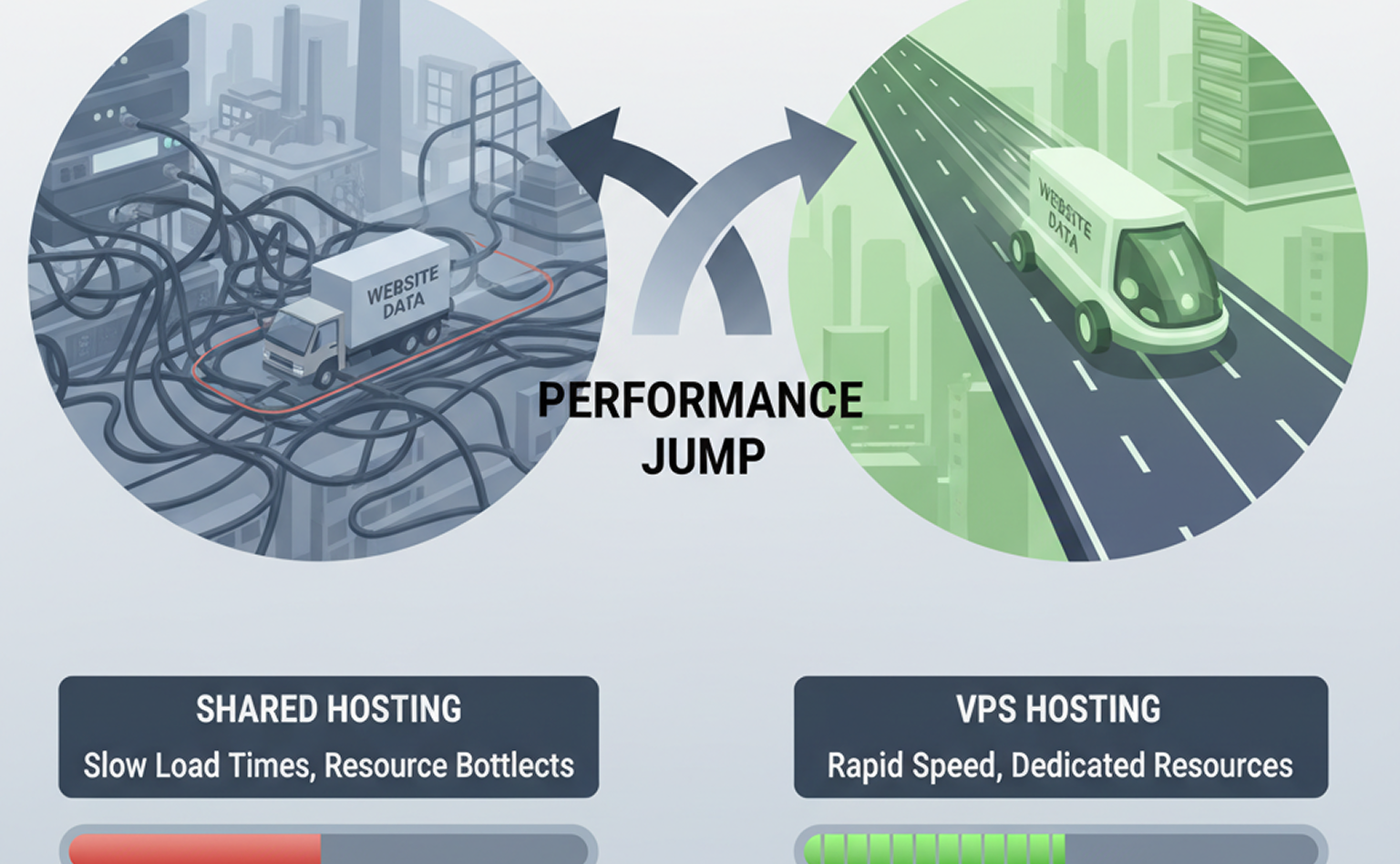- Best hosts of 2025
- Reviews
Reviews of Web Hosting Providers
We have been using and testing multiple web hosting providers since 2010. Based on our longterm testing, we are bringing you a comparison that will help you choose the best host for you.
- Website Builders
- Blog
Case Study: Migrating from Shared to VPS – The Performance Jump

Introduction
In the world of web hosting, the choice between shared hosting and Virtual Private Servers (VPS) can significantly impact website performance, reliability, and user experience. This case study examines the migration process of a small e-commerce website, ShopSmart, which transitioned from shared hosting to a VPS solution. We’ll explore the challenges faced, the migration process, and the performance improvements achieved.
Background
ShopSmart is a growing e-commerce platform specializing in eco-friendly products. Initially, the site was hosted on a shared hosting plan, which offered low costs but limited resources. As the business expanded, ShopSmart began experiencing performance issues, including slow load times and frequent downtime during peak traffic periods.
Challenges with Shared Hosting
- Slow Load Times: As traffic increased, the website’s load times began to suffer. Page speeds often exceeded three seconds, leading to user frustration and higher bounce rates.
- Limited Resources: Shared hosting meant that resources were distributed among multiple websites. This limitation affected ShopSmart’s ability to handle traffic spikes, especially during promotional events.
- Downtime: The shared environment often led to unexpected downtime, which directly impacted sales and customer trust.
- Lack of Control: With shared hosting, ShopSmart had limited access to server configurations and optimizations, resulting in a less-than-ideal performance.
Migration to VPS
After careful consideration, the owners of ShopSmart decided to migrate to a VPS hosting solution. Here’s how the migration process unfolded:
1. Choosing a VPS Provider
ShopSmart researched various VPS hosting providers, focusing on factors such as performance, customer support, and scalability. They ultimately chose VPSHostPro due to its robust infrastructure and positive user reviews.
2. Planning the Migration
Before the migration, the team outlined a plan to minimize downtime and data loss. Key steps included:
- Backing Up Data: All website files, databases, and configurations were backed up to ensure data integrity.
- Setting Up the VPS: The new VPS environment was configured with the necessary software, including a web server (Nginx), PHP, and MySQL.
- Testing the New Environment: A staging version of the website was created on the VPS to test performance and functionality before the final migration.
3. Executing the Migration
The migration was executed over a weekend to minimize disruption. Key actions included:
- Transferring Files: Website files were securely transferred to the VPS using FTP.
- Database Migration: The database was imported into the VPS using a secure connection.
- DNS Update: The domain’s DNS settings were updated to point to the new VPS IP address.
4. Post-Migration Testing
After the migration was complete, the team conducted thorough testing to ensure everything functioned correctly. They monitored load times, checked for broken links, and verified payment processing.
Performance Improvements
The results of the migration were significant:
1. Load Time Reduction
- Before Migration: The average load time was approximately 3.5 seconds.
- After Migration: The load time dropped to an impressive 1.2 seconds, greatly enhancing user experience and engagement.
2. Increased Reliability
- Downtime: The VPS provided a 99.9% uptime guarantee, effectively eliminating the frequent downtime experienced on shared hosting.
- Resource Availability: ShopSmart could now handle traffic spikes without performance degradation, allowing for smooth operations during sales events.
3. Enhanced Control and Customization
With the VPS, the team gained root access to the server, allowing them to optimize configurations and install custom software as needed. This flexibility enabled better performance tuning and security enhancements.
4. Improved SEO Performance
The faster load times positively impacted ShopSmart’s SEO rankings. The website saw an increase in organic traffic, contributing to higher sales and customer retention.
Conclusion
Migrating from shared hosting to a VPS was a transformative decision for ShopSmart. The performance jump not only improved user experience but also bolstered the site’s reliability and SEO performance. As the business continues to grow, the flexibility and control offered by VPS hosting will be invaluable in supporting future expansion.
For businesses experiencing similar challenges, this case study highlights the benefits of evaluating hosting solutions to ensure they align with growth goals and user expectations. The migration may require an initial investment, but the long-term benefits in performance and customer satisfaction are well worth it.



